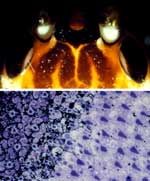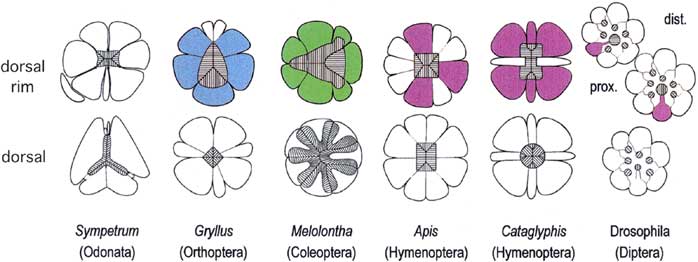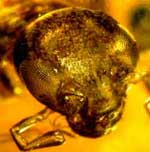
The phylogeny of the polarization compass |
||
| For analyzing the polarization pattern of the sky, insects use only a small group of special ommatidia situated at the dorsal rim of the compound eye (dorsal rim area; for an example see Fig. 1). These "POL-ommatidia" are specialized in a way that makes them especially suitable for polarization vision. Although the POL-ommatidia of insects in different orders are functionally similar, they show group-specific fine-structural differences in design that depend on the basic bauplan of the ommatidium in each group (Fig. 2). For this reason we conclude that the polarization compass arose polyphyletically in the insects.
|
more | |
| more | >> more | |


